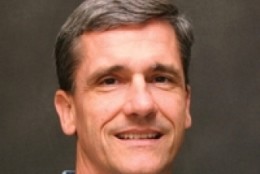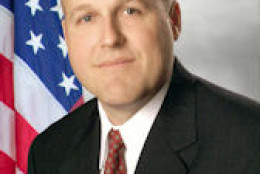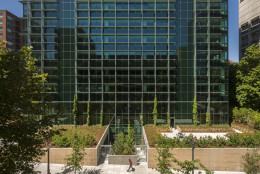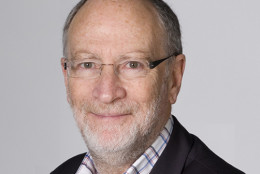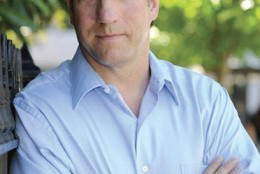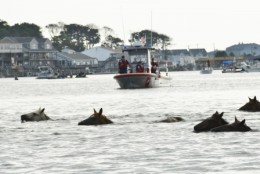Hubbard Radio Washington DC, LLC. All rights reserved. This website is not intended for users located within the European Economic Area.
Facilities/Construction
-
Once all the votes are tallied, the President-elect's transition team has only 77 days to learn everything it can from the outgoing administration on matters ranging from national security to personnel staffing.
July 21, 2015 -
Over the last two days, we've explored many of the trends in offices and buildings where you work. Now, we look inward to office interiors. Kevin Kampschroer is the chief sustainability officer at the General Services Administration, and director of the Office of High Performance Green Buildings. Environmental psychologist Judy Heerwagen is a program expert in that office. In the final part of our special report, "The Federal Office of the Future," they tell Federal News Radio's Lauren Larson more about the evolution of personal workspaces, and the planning required before choosing a new office.
July 16, 2015 -
Chairs — the final frontier of office place evolution. It's where we spend the majority of our work days, and they've come a long way since the simple, cheap models of the 1960s. Claire Ganley is a managing consultant at Humanscale. In the third and final part of our special report, "The Federal Office of the Future," she joined Tom Temin on the Federal Drive to review some of the current trends in ergonomics.
July 16, 2015 -
When you create a bureaucracy as large as the federal government, you've got to have a place for all those employees to work. From rural post offices to giant office buildings, federal workspaces have evolved over 200-plus years. As part of Federal News Radio's special report, The Federal Office of the Future, this photo gallery takes a look at the way federal offices have changed over the years.
July 16, 2015 -
Claire Gainley of Humanscale talks with Federal News Radio's Tom Temin about how to best design chairs to fit the people who will use them.
July 16, 2015 -
In the future, federal offices could be more like patios - where furniture is adjustable and moveable for whatever task or project is at hand, say experts at the General Services Administration. In our special report, The Federal Office of the Future, we examine the research behind the decision to make office spaces more flexible.
July 16, 2015 -
When it comes to federal buildings, efficiency is all the rage. The government has gone all in for the Leadership in Energy and Environmental Design (LEED) standards. Agencies can't even consider some construction projects unless they're LEED certified. In part two of our special report, "The Federal Office of the Future," Michael Blount, the vice president of Balfour-Beatty Construction, joined Tom Temin on the Federal Drive to elaborate on these changing standards.
July 15, 2015 -
The General Services Administration is one of the agencies leading the drive to improve energy efficiency in federal buildings. Last year, it commissioned a complete transformation of the Edith Green-Wendell Wyatt Building in Portland, Oregon. Originally built in 1974, it's now one of the most efficient federal buildings in the country. In part two of our special report, "The Federal Office of the Future," Chaun Benjamin, the Region 10 commissioner for GSA's Public Buildings Service, joined the Federal Drive with Tom Temin with a behind-the-scenes look at the renovations.
July 15, 2015 -
Eco-friendly construction is a priority, and in some cases a requirement. for future office planning in the federal government. Federal News Radio's special report, The Federal Office of the Future, explores how LEED certification standards are sweeping the country in new and current federal offices.
July 15, 2015 -
After a four-year renovation, the Edith Green-Wendell Wyatt (EGWW) Federal Building is a model of success for the green construction movement. The building now uses about half as much energy as it previously did and 60 percent less water than typical office buildings. Federal News Radio goes inside the building in part 2 of our special report, The Federal Office of the Future.
July 15, 2015 -
Agencies are dragging their employees kicking and screaming into the era of open-office design. Leaders might love having everyone in one room and able to make eye contact and chat at any moment. But an exclusive Federal News Radio survey, part of our special report on "The Federal Office of the Future," shows that feds are happiest at work when they can close their doors. Reporter Emily Kopp joined Tom Temin on the Federal Drive with more survey details.
July 14, 2015 -
Humans are innately attracted to nature. It even has a name — biophilia. But as employees work longer hours, their time spent in the outdoors gets cut short. That's why more and more companies are bringing the outdoors inside. Researchers say an office space that includes elements from nature will inevitably help enhance productivity. Cary Cooper is a professor of organizational psychology and health at the University of Manchester in England. As part of our special report, "The Federal Office of the Future," he joined Tom Temin on the Federal Drive to explain more about the growing trend of biophilia.
July 14, 2015 -
If you've ever gone for a long walk in the woods, you're aware of the soothing power of nature. Now there's a way to bring that feeling to work with you. It's called biophilia: the idea of connecting employees directly to nature, even while they're at work. But how do you implement biophilic design practically? In part one of our special report, "The Federal Office of the Future," Bill Browning, a partner at the sustainability consulting firm Terrapin Bright Green, joined Tom Temin on the Federal Drive to review the current trends in biophilic design.
July 14, 2015 -
As part of Federal News Radio's special report, The Federal Office of the Future, we take a look at 10 unusual places where federal workers clock in at every day.
July 14, 2015





